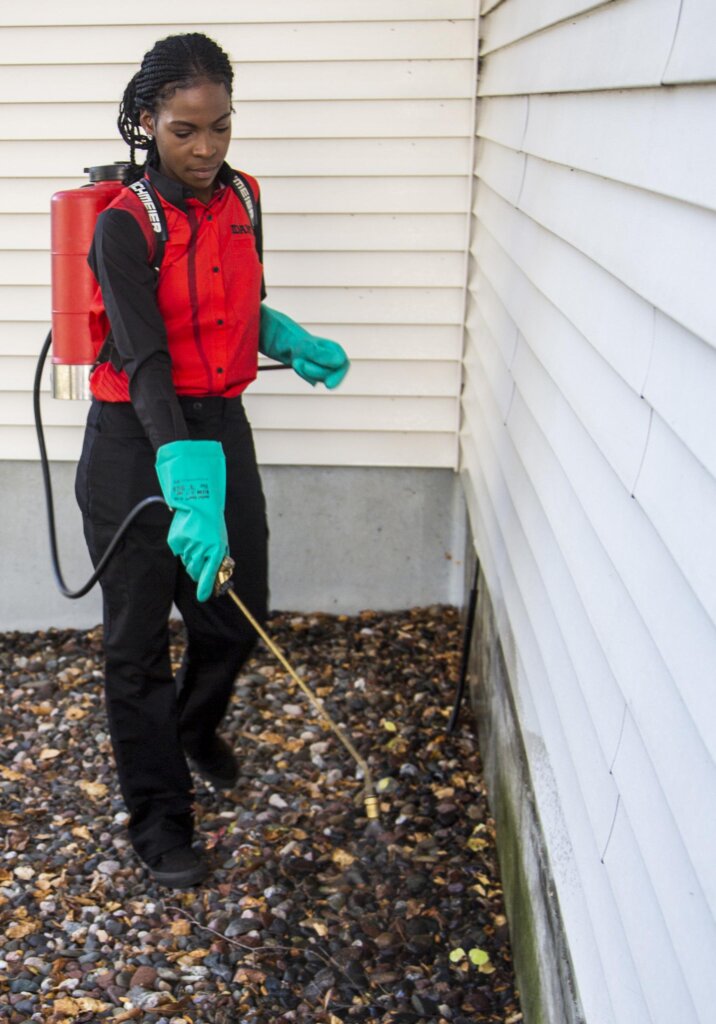Bed Bug Treatment Failure: Comparing Chemical Vs. Non-Chemical Solutions
In the world of bug control, specifically when taking care of the persistent issue of bed pests, the selection in between chemical and non-chemical treatment services can be a crucial one. Both approaches supply distinctive advantages and disadvantages, affecting variables such as efficiency, security factors to consider, and total price. By checking out the nuanced information of each approach, a more clear understanding of which path to go after in resolving a bed bug invasion can be acquired.
Effectiveness of Chemical Therapies
Chemical treatments for bed bug problems have actually been commonly recognized for their potent and fast effectiveness in removing these insects. When thinking about the performance of chemical therapies, it is crucial to recognize that they can provide a fast and thorough option to a bed insect problem. Specialist exterminators commonly count on insecticides to target bed bugs at different stages of their life process, including fairies, eggs, and grownups. These chemicals usually work by interfering with the bed bugs' nervous system, leading to paralysis and ultimate death.
In addition, chemical therapies have the advantage of offering recurring effects, implying that they can remain to get rid of bed bugs also after the preliminary application. This residual activity is especially useful in combating any possible re-infestations. Furthermore, the rapid activity of chemical therapies can bring alleviation to people encountering serious bed bug invasions, allowing them to reclaim control of their home quickly.
Safety And Security Worry About Chemical Solutions
One vital facet that needs mindful consideration when making use of chemical remedies for bed bug treatment is making sure the safety and security of occupants and the environment. While chemical treatments can be efficient in removing bed insects, they may position dangers otherwise managed effectively. Among the primary safety worry about chemical services is the potential injury they can cause to human health. Exposure to certain chemicals used in bed insect treatments can result in respiratory issues, skin irritation, or other unfavorable reactions, specifically in people with pre-existing conditions or level of sensitivities. Furthermore, improper application or dose of chemical pesticides can cause poisonous deposits remaining in the treated location, presenting long-term wellness threats to occupants.
Moreover, the ecological effect of chemical solutions is one more substantial consideration. Some chemicals utilized in bed pest treatments might be hazardous to useful insects, wildlife, and ecological communities if they leach right into the dirt or water systems. It is necessary to utilize chemical therapies carefully, complying with safety and security guidelines, and thinking about much less toxic alternatives to mitigate these risks and make sure the reliable and secure monitoring of bed insect invasions.
Benefits of Non-Chemical Strategies
Thinking about the possible safety issues and ecological influence connected with chemical remedies for bed bug treatment, checking out non-chemical strategies presents an encouraging choice with several distinct benefits. Non-chemical techniques supply a safer option for homes, especially those with pets, individuals, or youngsters conscious severe chemicals. These strategies get rid of the dangers of exposure to poisonous compounds, reducing the capacity for unfavorable health and wellness impacts. Additionally, non-chemical therapies are environmentally friendly, as they do not contribute to air or water air pollution, making them a lasting selection for pest control.
In addition, non-chemical solutions can be reliable in targeting bed pests, including hard-to-reach locations where chemical treatments may not penetrate. Approaches such as warm treatment, vacuuming, steam cleansing, and cushion encasements give detailed obliteration without making use of hazardous chemicals. Additionally, non-chemical methods can be much less disruptive, requiring very little prep work and enabling quicker reentry into treated locations. In general, going with non-chemical bed bug therapy techniques not just prioritizes security and ecological security but likewise ensures effective and comprehensive parasite control.
Limitations of Non-Chemical Treatments

Furthermore, non-chemical treatments often call for multiple applications to accomplish successful elimination. This can be time-consuming and may not constantly assure complete removal of all bed pests and their eggs, specifically in surprise or hard-to-reach locations.
Moreover, the success of non-chemical therapies greatly relies upon proper application and thoroughness, which can be testing for people without expert knowledge. Poor application of non-chemical approaches may lead to insufficient elimination, bring about persistent invasions and the requirement for additional treatments.
As a result, while non-chemical therapies have their benefits, it is important to acknowledge these limitations and consider them when figuring out the most reliable strategy for handling bed pest problems.
Price Contrast: Chemical Vs. Non-Chemical Options
Given the constraints linked with non-chemical therapies, a necessary aspect to review in the context of bed bug monitoring is the cost comparison in between chemical and non-chemical official site choices. In contrast, non-chemical therapies like heat therapy or vapor can be a lot more expensive, with expenses varying from $1,000 to $6,000 for an entire home. While the preliminary cost of chemical therapies may appear reduced, several treatments might be needed to totally eliminate the problem, potentially boosting the overall expense.
Verdict

Considering the prospective safety and security concerns and ecological influence associated with chemical options for bed bug treatment, checking out non-chemical strategies presents an appealing option with several distinct benefits.Provided the constraints associated with non-chemical treatments, an on call pest control important facet to assess in the context of bed insect monitoring is the price comparison in between chemical and non-chemical alternatives. In contrast, non-chemical treatments like warm therapy or vapor can be much more costly, with prices varying from $1,000 to $6,000 for an entire home. While the initial cost of chemical therapies might appear reduced, multiple treatments may be called for to fully eliminate the invasion, possibly raising the total price.In conclusion, when comparing chemical and non-chemical bed bug treatment choices, it is crucial to consider effectiveness, safety, benefits, limitations, and cost.